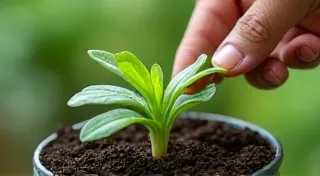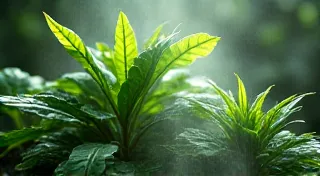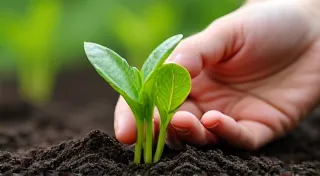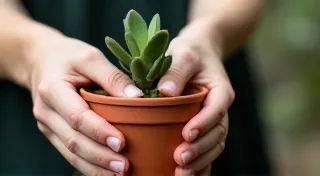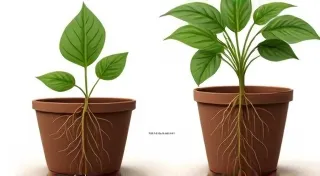Soil Basics for Beginners: Understanding Potting Mixes & Amendments
Welcome to the wonderful world of plant care! One of the most crucial elements for healthy, thriving houseplants is the soil they grow in. Forget what you know about garden soil – houseplants need a specialized medium that allows for good drainage, aeration, and nutrient retention. This guide will break down the basics of potting mixes and how to amend them to create the perfect environment for your green friends. A key part of success in plant care is not only understanding the soil, but also understanding how to provide the right amount of water. If you're unsure about the nuances of watering, take a look at our guide, Watering 101: Avoiding Overwatering and Underwatering Your Houseplants.
What is Potting Mix?
Potting mix, also known as potting soil (though technically not soil!), is a blend of ingredients designed specifically for container gardening. It’s lighter and more porous than garden soil, which can compact and become waterlogged in pots, leading to root rot. Common ingredients include:
- Peat Moss: Retains moisture and provides a slightly acidic environment (which most houseplants prefer). However, it's important to note that peat moss harvesting can be unsustainable. Consider alternatives like coco coir.
- Coco Coir: A sustainable alternative to peat moss, made from coconut husk fibers. It provides excellent drainage and aeration.
- Perlite: Volcanic glass that has been heated and expanded. It improves drainage and aeration by creating air pockets in the mix.
- Vermiculite: A mineral that expands when heated. It helps retain moisture and nutrients.
- Bark Fines: Decomposed bark that provides excellent drainage and aeration, often used for orchids and other plants that prefer a chunky mix.

Understanding Different Potting Mix Types
You'll find different pre-mixed options at your local garden center. Here's a quick breakdown:
- General Purpose Potting Mix: A good starting point for many houseplants.
- Cactus & Succulent Mix: Formulated for plants that need extremely well-draining soil. Contains extra perlite and sand. Often, plants thriving in lower light also benefit from this type of soil mix. Check out our list of Best Plants for Low Light: Thriving in Shady Spaces for more details.
- African Violet Mix: A lighter, slightly acidic mix ideal for African Violets.
- Orchid Mix: Typically chunky and airy, providing excellent drainage and aeration for orchids.
Amending Your Potting Mix
Sometimes, the pre-mixed potting mix isn't quite right for your specific plant. That’s where amending comes in. Here's how to customize your soil:
- For Better Drainage: Add more perlite or coarse sand. If you've chosen to grow plants like succulents, drainage is especially important.
- For Increased Moisture Retention: Add more vermiculite or coco coir.
- For Plants that Prefer Acidity: Add a small amount of pine needles or peat moss.
- To Add Nutrients: Incorporate compost or worm castings (though these are generally slow-release, so don't expect a huge boost right away). The health of your plants isn't solely determined by the soil, but being able to identify and address common plant emergencies can save them. Learn more with our guide, Plant First Aid: Quick Tips for Common Houseplant Emergencies.
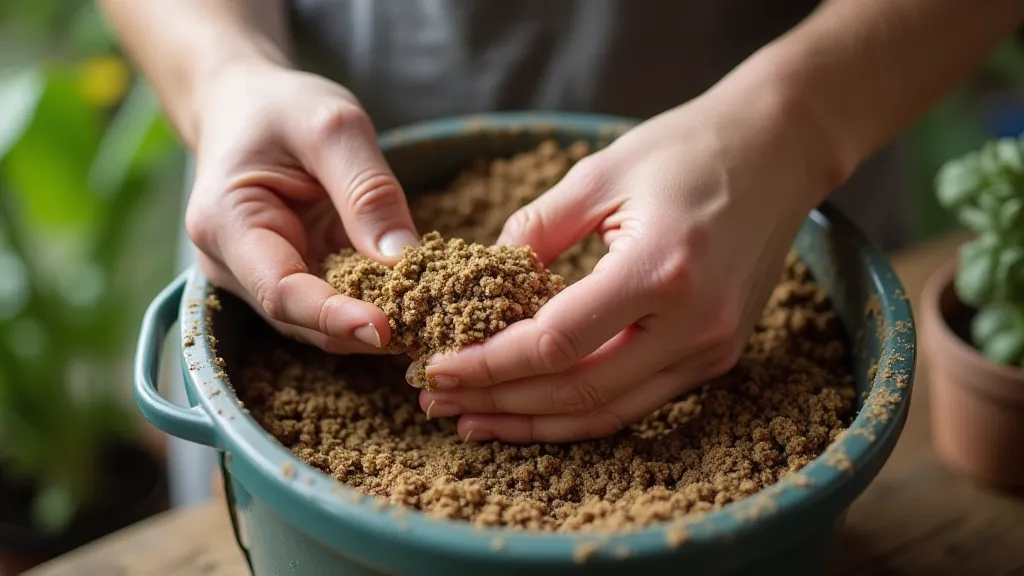
A Few Important Considerations
- Don't use garden soil in pots: It compacts and drains poorly. The unique requirements of houseplants simply can’re met by garden soil.
- Check the moisture level: Even with the right soil, watering frequency depends on the plant, pot size, and environmental conditions. Pay close attention to your plants’ needs, as signs of over or under watering can often be subtle.
- Re-pot regularly: Over time, the soil's structure breaks down and nutrients are depleted. Re-potting every 1-2 years with fresh soil provides a renewed start. This is especially important as your plants grow and their root systems expand.
- Observe your plants: Yellowing leaves, wilting, or stunted growth can be signs of soil problems. Adjust your soil mix accordingly. Consider factors such as lighting and humidity in addition to soil conditions.
- Choosing the Right Pot: The type of pot you choose can impact drainage and aeration. Terra cotta pots are porous and allow for good airflow, while plastic pots retain moisture longer.
- Understanding pH Levels: Most houseplants prefer a slightly acidic soil pH of around 6.0 to 7.0. You can purchase soil testing kits to measure the pH of your potting mix.
- Dealing with Pests and Diseases: Healthy soil contributes to a plant’s overall health and makes it less susceptible to pests and diseases. However, preventative measures and regular inspection are still important.
- Propagation and Soil Requirements: When propagating houseplants, it's important to use the right type of soil to encourage root development. A well-draining and sterile mix is often recommended.
- Organic vs. Conventional Potting Mixes: Organic potting mixes are made from natural ingredients and often contain beneficial microbes. Conventional mixes may contain synthetic fertilizers and additives. Choose the option that aligns with your gardening philosophy.
- Sustainable Soil Practices: Consider using sustainable alternatives to peat moss, such as coco coir or composted bark. These options are more environmentally friendly and help conserve natural resources.
- The Role of Mycorrhizae: Mycorrhizae are beneficial fungi that form a symbiotic relationship with plant roots. They help plants absorb nutrients and water more efficiently. Some potting mixes contain mycorrhizae to promote plant growth.
- Troubleshooting Soil Problems: Common soil problems include compaction, poor drainage, nutrient deficiencies, and pH imbalances. Learn to identify these problems and take corrective measures to restore soil health.
- Advanced Soil Amendments: For experienced gardeners, advanced soil amendments like worm castings, bat guano, and rock phosphate can provide a boost to plant growth. Use these amendments sparingly and follow instructions carefully.
- The Importance of Soil Life: Healthy soil is teeming with beneficial organisms, including bacteria, fungi, nematodes, and protozoa. These organisms play a vital role in nutrient cycling and disease suppression.
- Understanding Soil Texture: Soil texture refers to the proportion of sand, silt, and clay particles in the soil. A balanced soil texture provides good drainage, aeration, and water retention.
- Soil Sterilization: Sterilizing potting mix can help eliminate pests, diseases, and weed seeds. However, it also kills beneficial organisms. Consider sterilizing only if necessary.
- Building a Soil Food Web: The soil food web is a complex network of organisms that interact with each other and with plants. Promoting a healthy soil food web is essential for long-term soil health.
- Custom Soil Blends: Experimenting with different soil ingredients and ratios can help you create a custom soil blend that is perfectly suited to your plants’ needs.
- Soil Analysis: Sending a soil sample to a laboratory for analysis can provide valuable information about its nutrient levels, pH, and other characteristics.

Final Thoughts
Understanding soil basics is a key step in becoming a confident plant parent. Expanding your collection often requires propagation. Learn how to increase your plants for free with our guide, Propagating Houseplants: Expanding Your Collection for Free. Experiment with different mixes and amendments to find what works best for your plants and enjoy the rewards of a thriving indoor jungle!

